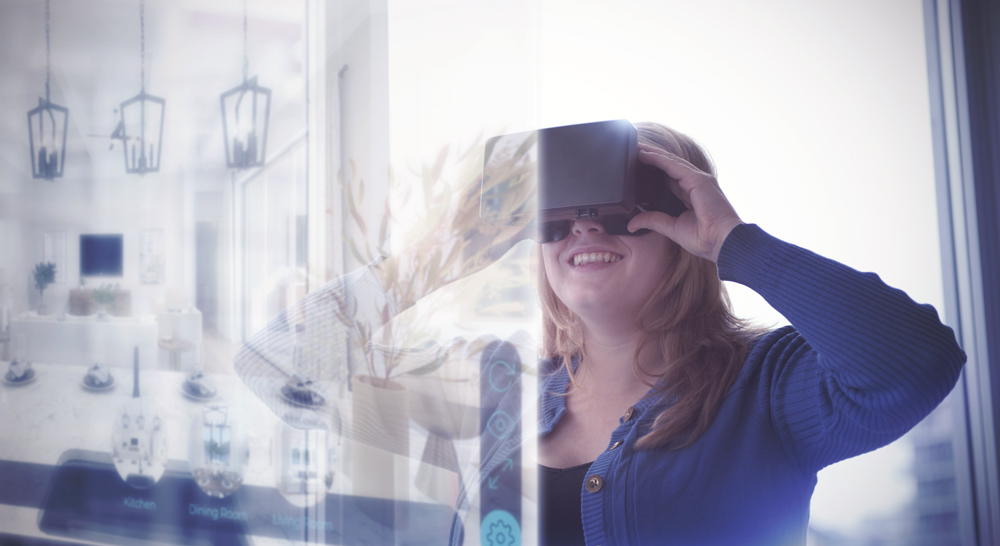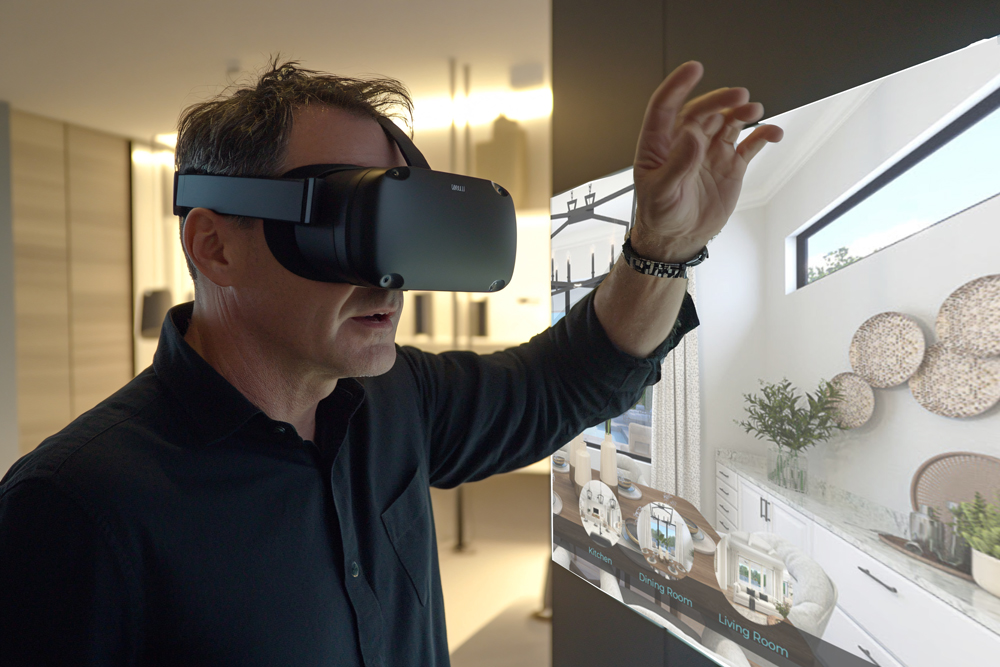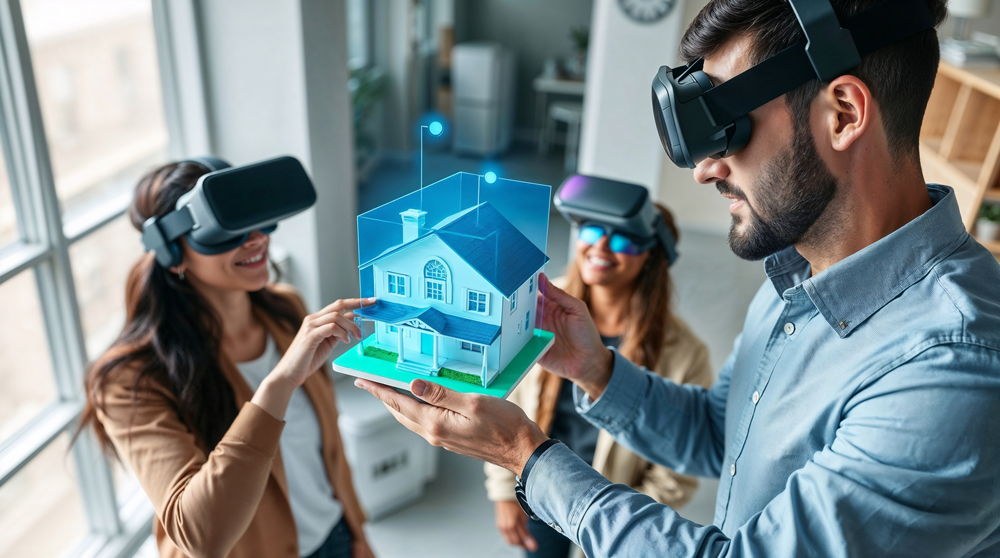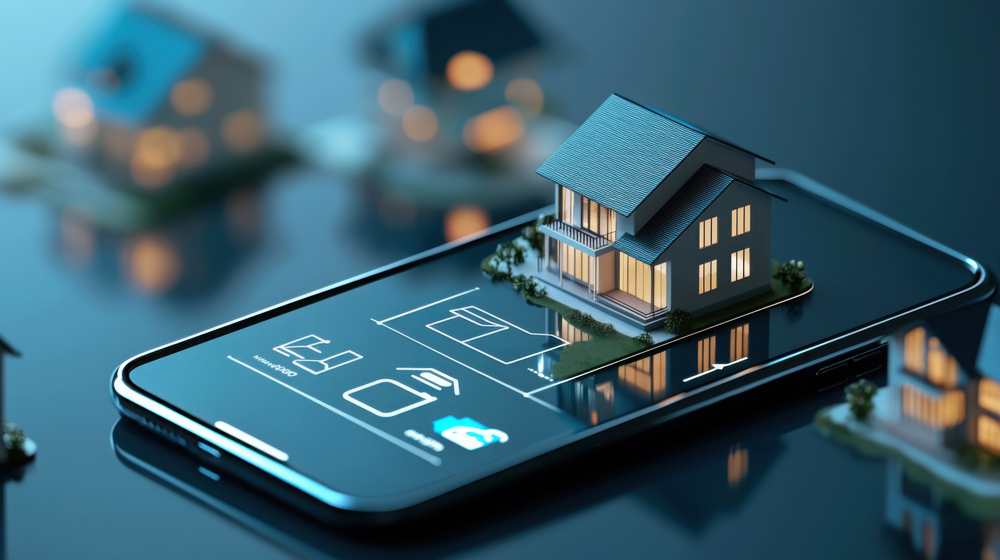
Imagine this. It’s the year 2045. A prospective buyer slips on a lightweight headset and steps into their future home. They cook breakfast in the virtual kitchen, rearrange furniture with hand gestures, and host a digital housewarming party where avatars of friends, family and even future neighbors drop by to say hello. By the time the weekend is over, they know the floor plan, finishes, neighborhood vibe, and even the sunlight pattern in the backyard. They haven’t stepped foot on the property yet and they’re ready to buy.
Sound far-fetched? Not for long. This is the trajectory we’re on, and for marketing executives and managers in the homebuilding industry, the time to prepare is now.
Why Virtual Reality Is Reshaping Builder Marketing
Virtual Reality (VR) is no longer a buzzword. It is quickly becoming a practical, scalable, and strategic tool for production home builders looking to enhance the homebuyer experience, generate more qualified leads, and shorten the sales cycle.
From immersive floor plan tours to virtual design centers, VR gives marketing teams a new way to deliver what buyers want most: clarity, personalization, and confidence.
How Builders Are Using VR Today

Large National Builders
Companies like Lennar, Toll Brothers, and PulteGroup are leading the charge. These firms are integrating VR into their marketing ecosystems using custom-built virtual models, interactive selection tools, and CRM-integrated design platforms.
Buyers can explore entire collections of homes online. Some builders even provide VR headsets in sales offices, allowing buyers to walk through multiple layouts without leaving the room.
Smaller Production Builders
Regional builders are making smart moves with scaled-down solutions. Many are working with third-party platforms like Outhouse, LLC to create cost-effective, web-based virtual tours of their most popular plans.
Others use VR to showcase floor plans that don’t yet have physical models, or to streamline remote sales in markets where on-site staff is limited.
Pros and Cons from a Marketing Perspective
Pros
- Reduces dependency on expensive model homes
- Engages out-of-state and remote buyers early in the funnel
- Increases buyer confidence and reduces drop-off during the sales process
- Enables faster upgrade decisions and higher customization spend
- Creates memorable experiences that differentiate your brand
Cons
- Initial production costs for custom VR environments can be significant
- Requires training for both sales and marketing teams
- Ongoing updates are needed to reflect plan and product changes
- Not every buyer is comfortable using VR, especially without guided assistance
What Buyers Really Think

Buyers, especially Millennials and Gen Z, expect immersive digital experiences. Surveys show that most buyers prefer to preview homes online before visiting in person. VR lets them do this in a way that photos and floor plans simply cannot match.
These experiences build emotional engagement and make it easier for buyers to envision their future lifestyle. In some cases, buyers decide on upgrades, layouts, and even specific lots before their first visit to the sales office.
Cost Versus Value
Marketing executives are always weighing investment versus impact. While building a single physical model home can cost over $500,000, a high-quality VR model may cost between $5,000 and $40,000. When scaled across multiple communities or plans, the savings are substantial.
There are also indirect returns. VR tools can increase online engagement, lower marketing costs per sale, and accelerate buyer decision-making. When paired with analytics platforms, VR usage can also offer insight into buyer behavior and preferences that guide future campaigns.
How VR Fits into the Marketing Stack
Think of VR not as a standalone tool but as an extension of your digital marketing funnel.
- Use VR tours on listing pages to increase dwell time
- Integrate virtual design centers with your CRM to track buyer preferences
- Provide virtual walkthroughs in email follow-ups and sales presentations
- Embed VR in mobile sales apps for on-site agents and remote consultations
The best implementations also include analytics, allowing marketing teams to see exactly where buyers spend their time and which plans generate the most engagement.
What’s Next for VR in Homebuilding?

Over the next 5 years, expect to see:
- Personalized virtual experiences based on a buyer’s budget, lifestyle, and design taste
- Interactive community maps and lot views within virtual environments
- VR-enabled sales centers where buyers explore full portfolios through wall projections and headsets
- AI-guided tours that recommend plans based on user behavior
A Fun Glimpse 20 Years Ahead
By 2045, home shopping will feel more like test driving a life than walking through a property. Prospects will:
- Spend a weekend “living” in a home digitally before committing to build
- Meet future neighbors in virtual community mixers
- Experience seasonal changes, ambient sound, and natural light inside their future home
- Host virtual design consultations with contractors and decorators in a 3D model of their homev
For marketing leaders, this means thinking beyond floor plans and finishes. Future campaigns may include interactive lifestyle previews, neighborhood social simulations, and branded VR events where buyers immerse themselves in your brand story.
Final Thoughts
For homebuilder marketing executives, the opportunity is clear. VR is not just a gimmick. It is a powerful tool for driving engagement, shortening the path to purchase, and delivering a competitive advantage in a crowded market.
Whether you’re running national campaigns or managing a regional portfolio, adopting VR now means building for the future. And that future is immersive, personalized, and closer than you think.
To step into the future and commence your VR journey, contact kevin.weitzel@outhouse.net.